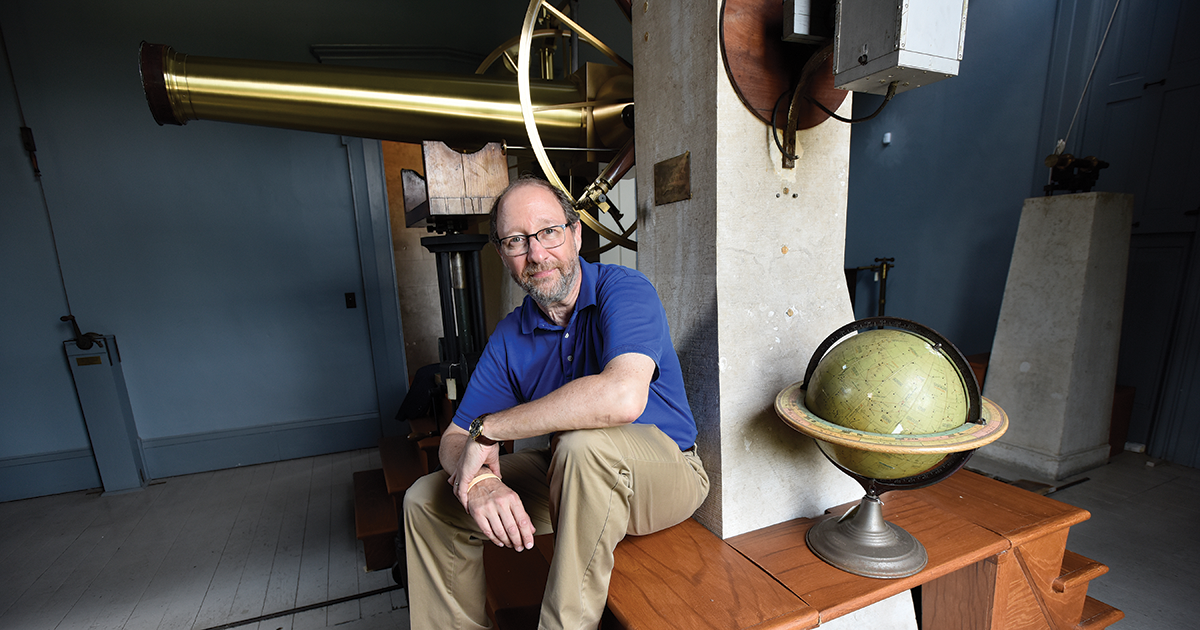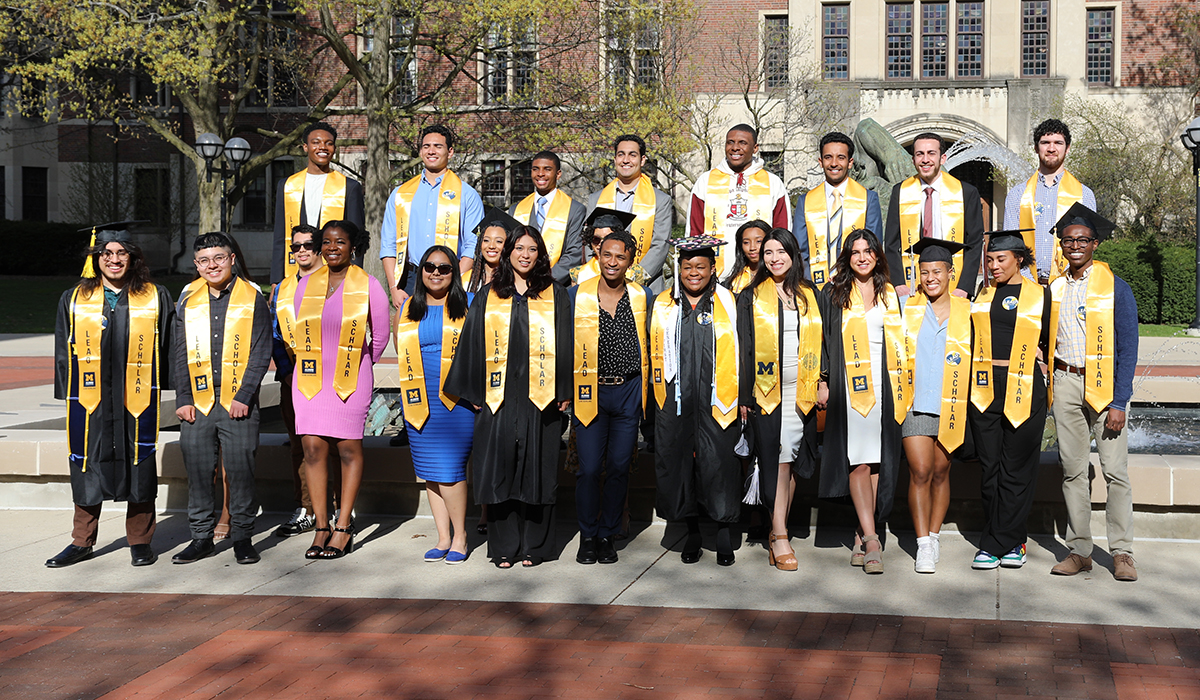In “What We Keep,” we asked a handful of alumni to share stories of their most-treasured objects. The article made us wonder, “What object at the University might be considered the most significant and revered?” Gary Krenz (pictured), director of post-bicentennial planning at the U-M Bentley Historical Library and a member of the Detroit Observatory team, writes about one, or rather two, particularly strong contenders.
Tucked away on the hill between Couzens and Alice Lloyd residence halls is a University gem, a little building that looms large in the history of U-M and American higher education: the Detroit Observatory. Naturally, people think it is located in Detroit, but it sits here in Ann Arbor.
The story of the observatory starts with Henry Philip Tappan, the first president of the University. Well known for his views on higher education, he believed in the creation of what he considered a “true” university, one dedicated not just to classical education but to research, more like German than American universities. When U-M’s board of regents appointed him president in 1852, he saw his opportunity.
In his inaugural address, Tappan made his case. Henry Walker, a Detroit businessman in the audience, asked Tappan how he could help. Soon after, they formed a partnership that raised funds from Detroit businesses and philanthropic leaders to construct an astronomical observatory.
Upon its opening in 1854, it became Michigan’s first observatory and U-M’s first research building. It also housed the University’s first major research instruments: two state-of-the-art telescopes. Tappan named it the Detroit Observatory, wanting to recognize these early, critical donors.
While the observatory was under construction, Tappan traveled to Europe and received a triple reward for his efforts.
The first was the telescope itself (pictured at top of photo above), a high-precision, 6-inch-diameter brass meridian circle telescope from the Berlin firm Pistor & Martins. It could pinpoint with great accuracy the celestial coordinates of stars. The data were used to study those stars in greater detail with the observatory’s larger, 12-inch refracting telescope. Made in New York by Henry Fitz, that telescope was one of the largest in the world (and in 1997 was completely restored).
But it was the ability of the smaller telescope to track stars as they crossed the meridian that allowed astronomers to pinpoint time. The time signal was telegraphed to Detroit, where a time ball was dropped each day at noon so railroads, ships, businesses, and citizens could adjust their clocks to one common time. “Observatory time” also served for years as the standard time for the state of Michigan.
The second reward came in the form of Franz Brünnow, a rising German astronomer who monitored construction of the meridian telescope and then came to the U.S. to serve as the first director of the observatory. Brünnow, the first PhD on U-M’s faculty, launched the nation’s first mathematically rigorous astronomy department.
The third reward was personal: a lifelong friendship with Brünnow, who married Tappan’s daughter Rebecca in 1857. He became part of an extended family that endured much adversity, including Tappan’s firing by the regents in 1863 despite, or perhaps because of, his ambitious vision for the University.
History has shown that this small building and its telescopes marked a dramatic beginning for U-M, which started in Detroit in 1817. But the Detroit Observatory is also a birthplace: the birthplace of U-M as a “true” university.
As the second-oldest-surviving building on campus, it invites all to immerse themselves in heavenly bodies and learn about the aspirations and accomplishments that made our University. Public viewing nights, using the larger telescope, are held several evenings a month, weather permitting. The meridian circle telescope, all gleaming brass and precision gears, stands in its original mount.
Thanks to a recent authorization by the board of regents, planning is underway for an observatory annex to enhance visitors’ experience. Come visit a place where the sky is the limit.





